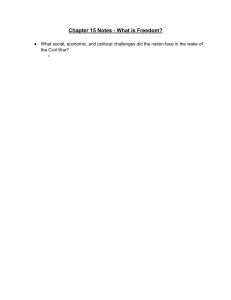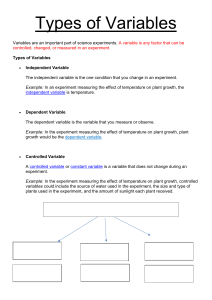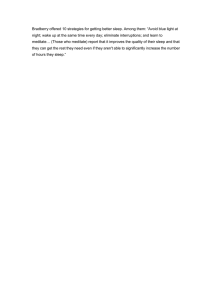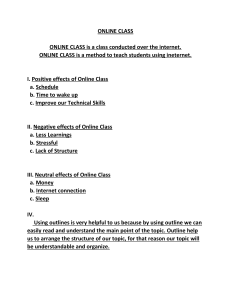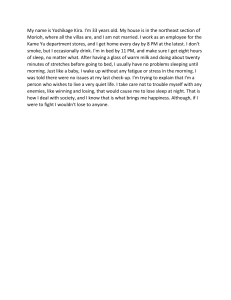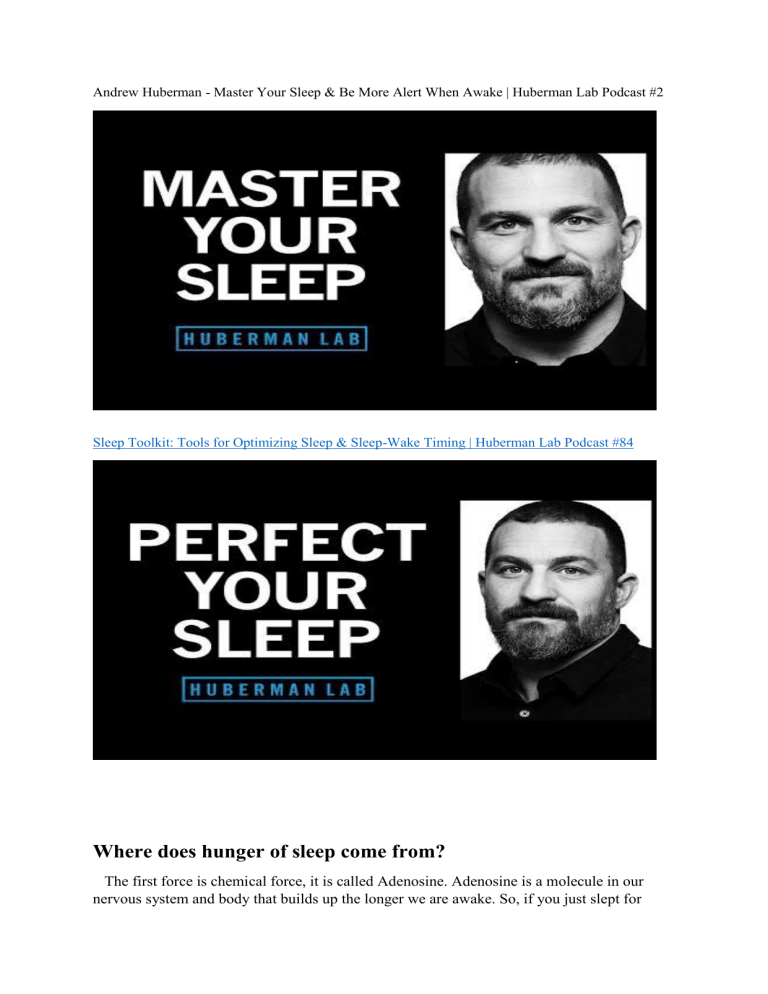
Andrew Huberman - Master Your Sleep & Be More Alert When Awake | Huberman Lab Podcast #2 Sleep Toolkit: Tools for Optimizing Sleep & Sleep-Wake Timing | Huberman Lab Podcast #84 Where does hunger of sleep come from? The first force is chemical force, it is called Adenosine. Adenosine is a molecule in our nervous system and body that builds up the longer we are awake. So, if you just slept for eight or nine or ten really deep restful hours, Adenosine is going to be really low in your brain and body. If, however, you have been awake for ten, fifteen, or more hours, Adenosine levels are going to be much higher. Adenosine creates a sort of sleep drive or a sleep hunger. So, the reason you get sleepy when you have been up for a while is because Adonesine is creeping up steadily, the longer you have been awake. The Effect of Caffeine on Sleep Caffeine, for most people, except a very small percentage of people, wakes them up and makes them feel more alert. In fact, some people are so sensitive to caffeine that they feel jittery if they drink it even in small amounts. Other people can drink large amounts of caffeine and not feel jittery at all. Caffeine acts as an Adonesine antagonist. What that means is that when you ingest caffeine, whether or not it is coffee, soda, tea, or any other form, it binds to the Adonesine receptor. It sort of parks there, just like a car would park in a given parking slot and therefore Adonesine cannot park in that slot. So, the reason caffeine wakes you up is because it blocks the sleepiness receptor. It blocks the sleep signal and this is why when that caffeine wears off, Adonisine will bind to that receptor sometimes with even greater what we call affinity and you feel the crush, you will especially tired. I am not here to demonize caffeine, I love caffeine and drink it in the morning and I drink it in the afternoon but I am one of these people that either because of my tolerance or because of some genetic variations that exist among people in terms of their Adenosine receptors I can drink caffeine as late as four or five PM in the evening and still fall asleep just fine. Some people can’t have any caffeine at all or cannot have any caffeine past 11 AM or else their sleep is totally disrupted. All this has to do with the relationship between Adonesine and this Adonesine receptors, genetic variation things that are very hard to find out except experimentally, meaning each of you needs to decide and figure out for yourselves whether or not you can tolerate caffeine and what times in day you can tolerate caffeine in order to still fall asleep easily and get good sleep. Ingesting caffeine right after waking up is not a good idea because you may experience “afternoon crash.” To avert this afternoon crash you want to ingest caffeine 90 to 120 minutes after waking up. “Having pulled an all-nighter, Sleepines Goes Away When Morning Rolls Around” Her ne kadar uyumadıkça Adonesine seviyesi artıyorsa da eğer tüm gece uyumayıp sabahladığında sabahleyin Adonesine seviyesi düşük olur ve kendini enerjik hissedersin. Bunun sebebi dünya üzerindeki tüm canlılarda bulunan sirkadiyen saatidir. Bu saat uykuyu düzenler, mesela her yarım saatte bir uykumuz gelmez de bloklar halinde gece uyuruz gündüz uyanığızdır. Sirkadiyen saatinin düzenleme yaparkenki tek uyaranı da güneş ışığıdır, güneş ışığı varken uyanık kalmamız üzerine kuruludur yapı. Sunlight Exposure and Wakefulness State When we wake up, light comes into our eyes. We have a particular set of neurons in our eyes, they are called retinal ganglion cells, and these neurons are brain neurons. It is vital to know that retina in our eyes are associated to our brain, so it is actually a part of our brain that resides outside our skulls. That’s said, there is a particular group of retinal ganglion cells that perceives only a specific type of light which is sunlight. This sunlight enables these cells so that they send message to our central clock called suprachiasmatic nucleus that has connections with every cell and organ in our body. We, in fact, use sunlight to activate this clock to ensure the proper cortisol and melatonin hormones. Cortisol is used by our bodies to give message internally that we have been woken up. Melatonin makes us sleepy. Once we wake up a timer starts going that says in about 12 to 14 hours melatonin will be secreted from our pineal gland. When we wake up in a dark room, there is no enough of light that triggers central clock to release of cortisol. The afromentioned cells in our retinas responds best to a particular quality and amound of light, sun light that comes off during sun rise. No matter how bright our phones, computers are, they are not enough because retinas of ours once we wake up do not work as efficiently as they do later in the day, so we have to take in so powerful light source. Furthermore, there is 10,000 to 50,000 lux (measurement for light) outside, whereas when you look at your phone inside your home it is approximately 500 to 1,000 lux, in short there is not enough lux of light to activate central clock inside. Staring at sun rise from window, et cetera is approximately 50 times less fruitful compered to going out and getting the sun light. I say going out because if you are not able to see the sun rise, you can get the same benefits by merely walking around your neighborhood because sun light scatters photons, light enery, so, below trees, in shadows, etc. you can still find “luxs” of light . The best timing you get this sunlight is as close as awaking. Of course these cells know nothing about if the light source is a mobile phone, sunset, sunrise or car headlight but what they do know about is the quality and amount of light. When sun is at a low angle it is the most appropiate time to get sun light and once sun gets overhead you miss the opportunity because the quality of sun light shifts. Last thing, get your sunlight exposure 80% percent of your life. If you missed your sun light exposure one day, then tomorrow you can make up for it by extending duration twice as much. How much time does it take to get cortisol pulse is another issue. If you live in Colarodo even if it is winter, it is going to take 30 to 60 second to activate central clock, whereas if you live in Scandanivia, it is almost impossible, not entirely impossible though, to activate the circadian clock unless you use artifical light sources that imitate sunlight. Another option aside from artifical light sources is just saying out longer even if it is densely cloudy. Some other things like exercising, food ingestion, medical drug intake, et cetera can trigger activation of central clock but that would indirect way to do and, in fact it is thousands of times less effective than sunlight. THE POWER OF SUNSET In addition to taking the sunlight into our eyes, the other vital aspect of this process is getting sunlight during sunset. So, we got sunlight exposure during sunrise and activated our circadian clock, now we have to get sunset light exposure to give message to our body that the day is ending and sleep time is close. It does not have to be just in time where sun is partially seen in the horizon, if it is around sunset like maybe within 1 hour of sunset, it is also fine. Morever, getting sunlight exposure during sunset also decreases bad effects of what we do later in the night such as being exposed to blue light which supresses melatonin, sleepiness hormone. BAD EFFECTS OF LIGHT Light is not supposed to arrive in your body just before sleep. In this age we are swarmed by artificial light, whether it is phone screen that we look at as soon as waking up or just going to bathroom during night. Having said this, another thing that makes everything worse is that our retina gets sensitive longer we are awake. So, if you have been awake for 10, 12, 14 hours then your retina gets sensitive and even a small dosage of light such as overhead lamp or TV screen makes you stay up late. You do not want to get light exposure to your eyes between 11:00 PM and 4 AM, and here is why. David Berson and Samer Hattar published a paper in “Cell”, which is excellent and very strict journal, showing that light that arrives to the eyes between 11:00 PM and 4 AM, approximately, supresses the release of dopamine, neuromodulator that makes us feel good and sort of an endogenous antidepressant, and can inhibit learning and create all sorts of other detrimental effects. It does through a mechanism that involves light into the eyes that’s then signaled to a structure called the habenula. When that habenula gets activated, it’s actually called the disappointment nucleus because it actually makes us feel less happy and more disappointed and can lead to certain forms of depression in the wakeful state. If you use bathroom during night or you have flight.once in a while, that’s okay. LOCATION OF LIGHT These cells in our eye, afromentioned retinal ganglion cells, reside mostly, not exclusively, in the bottom half of our retina. And because we have a lens in front of our retina and because of the optics of lenses, that means that these cells are actually viewing our upper visual field. This is probably not coincidental that these cells were esentially designed to detect sunlight, which is overhead, of course. So if you want to avoid improper activation of these neurons, it’s better to place lights that you use in the evening low in your physical environment, so on desktops or even the floor, if you want to go that way, as opposed to overhead lights. So overhead flroescent lights would be the worst, lights that are overhead that are a little bit softer of the sort or yellow or reddish tints, would be slightly better but dim lights that are set low in the room are the best. Candlelight actually does not activate these cells, so candlelight and fireplaces and campfires are fine. Rather than get into specifics of everybody’s situation, the way to think about this is that you have these internal mechanisms of adenosine and circadian clocks and what you are trying to do is provide them anchors so that your cortisol, your melatonin and then everything that cascades down from that, like your metabolism and your ability to learn and your sense of alertness, your dopamine, your serotonin all that stuff is timed regularly. One of the reasons why there is so much challenge out there with focus and anxiety and depression, there a lot of reasons for that but one of the reasons is that people’s internal mechanisms are not anchored to anything regular. Now, this does not require being neurotically attached to getting up at a very specific time, going outside, viewing the sunlight at the same time every day, these systems again, will average, but if you can provide them consistent light anchors early in the day and in the evening and avoiding light at night, you will be amazed at the tremendous number of possitive effects that will come from that. NAPS Naps, provided that they are less than 20 minutes or 30 minutes or even an hour, can be very beneficial for a lot of people. You do not have to take them. Many people naturally feel a dip in energy and focus late in the afternoon, in fact, if we were going to look at wakefulness, what we would find is that you get that morning light exposure, hopefully, your cortisol goes up. You will start feeling awake and then around two, or three, or four in the afternoon, there's a spike in everything from alertness to ability to learn, some metabolic factors drop, and then it just naturally comes back up, and then it tapers off as the night goes on. So for some of you, naps are great, I love taking naps, some people, they wake up from naps feeling really groggy. That's probably because they're not sleeping as well as they should at night or as long as they should at night and so they're dropping into REM sleep or deeper forms of sleep in the day time and then they wake up and they feel kind of disoriented. Other people feel great after a nap, so that's another case where, just like with caffeine, so sort of have to evaluate for yourself. MEDITATION / YOGA NIDRA (NSDR = Non-Sleep Deep Rest) There's a practice that I've adopted in the last 5 years that I've found to be immensely beneficial that is sort of like napping but isn't napping. It's a thing that they call yoga nidra, yoga nidra actually means yoga sleep and it's a sort of meditation that you listen to, there are number of scripts, I've talked about this on podcasts before but I'm going to post a link to the two that I like most (Yoga Nidra - Guided Meditation to Relax | 10min , https://www.youtube.com/watch?v=FroVfmOtaps ), that allows you to consciously bring your entire body and mind into a state of deep relaxation, and sometimes you fall asleep and sometimes you don't, this is done for 10 to 30 or even 60 minutes at a time. The other thing that works really well is meditation. So I'm talking about naps, but I'm also talking about yoga nidra, which is sort of a form of meditation, and then more standard forms of meditation, all three of those do something powerful which is that they bring our mind into a state of less so-called sympathetic nervous system activation, which is what governs your alertness, and instead, it activates cells and circuits in your body that promote the parasympathetic nervous system, or the calming system. A lot of people are not good falling asleep because they're not good at calming down. I don't have problems falling asleep most nights, but I've noticed that if I'm working very hard or if the world is particularly stressful, my mind gets into a bit of a kind of OCD loop where I tend to ruminate on things, and I'm not even thinking about anything in particular, it's just challenging for me to disengage and fall asleep. Meditation and yoga nidra scripts have been immensely helpful for me in terms of accelerating the transition to sleep, so they involve taking a few minutes, 10 to 30 minutes or so, just like you would for a nap, and just listening to a script, almost passively, and it has you do some particular patterns of breathing and some other kind of body-scan-like things that can really help people learn to relax, not just in that moment, but get better at relaxing and turning off thinking in order to fall asleep when they wanna do that at night. People would always say to me, "Well, when should I do them?" and I always say, "Well, the best time of day to do it is when you first wake up in the morning, provided you've gotten your sunlight already, "anytime you wake up in the middle of the night, "or any time of day." In other words, they're always good for you because it's a training mechanism by which you self-train your nervous system to go from a state of heightened alertness, that you don't want, to heightened relaxation that you do want, and so it's really teaching you to hit the brake. We can stay up if we want to, right? If we wanna stay up late on New Year's or we wanna push an all-nighter but it's very hard to make ourselves fall asleep. There's a sort of asymmetry to the way our autonomic nervous system, which governs this alertness-calmness thing. One of the things that I say over and over again is it's very hard to control the mind with the mind. When you have trouble falling asleep, you need to look to some mechanism that involves the body and all the things I described, meditation, yoga nidra, all involve exhale-emphasized breathing, certain ways of lying down and controlling the body. All of those involve using the body to control the mind rather than trying to wrestle your mind into a certain pattern of relaxation. MORNING TOOLS: SUNLIGHT, SPORT, COLD EXPOSURE We have already talked about sunlight exposure, so there is no need to repeat everything said. If you do not have time to get sunlight exposure, you take cold shower or stay under cold water from 1 to 3 minutes, as a result you will secrete epinephrin, adrenlin hormone, and dopamine, hormone for motivation and focus, etc. By doing so your body temperature will also increase and you will more alert. Another way to increase our body temperature is exercising. FOOD Ingesting food in large amounts will divert blood and so many essential tools in your body away from where they should be including your brain and get them around your gut and you will feel sleepy, consequently. So it would be wise not to eat large amounts of food in any time of day to focus on what you are doing. SLEEP SCHEDULE CONSISTENCY Turns out that most everybody feels the impulse to sleep in on the weekend, especially if they've been out late the night before. However, the data show that keeping relatively consistent sleep and wake times is really going to enhance the quality and depth of your sleep. So if you stay out late one night, sure, you might allow yourself to sleep in an extra hour or so, but you should really try to avoid sleeping in longer than an hour beyond your normal wake-up time. That's right. If you normally get eight hours of sleep and you wake up at 7:00 a.m., probably okay to wake up at 8:00 a.m. but try not to sleep until 11 or noon thinking that you're going to catch up on your sleep or that's better than waking up at a consistent time. TOOLS: TEMPERATURE MINIMUM & RED LIGHTS The tool that I'd like to offer you is an understanding of something called temperature minimum. And I'm going to make this as simple as possible and I'm confident that everyone can understand this even if you don't have any science background. Here's the question you need to ask yourself. What is your typical wake-up time? If your typical wake-up time most days is 7:00 a.m., well, then your temperature minimum is 5:00 a.m. Approximately two hours before your typical wake-up time, your body is at its lowest temperature that it will ever be in the 24-hour cycle. That's why it's called your temperature minimum. Here's what you need to know about your temperature minimum. If you view bright light, exercise, or drink caffeine or all of the above in the two to four hours before your temperature minimum, that will delay your clock. What that means when I say delay your clock is it will make you want to go to sleep later and wake up later the next night, okay? It's as if you put your clock on hold for a little while and then let it start again. That's the simplest way I can describe it. And you will tend to want to go to sleep later and wake up later the following night. Now, the opposite is true if you view bright light, drink caffeine, or exercise or socialize, I should say, in the hours immediately after your temperature minimum. So for you in this example, the person who's waking up at 7:00 a.m., your temperature minimum is 5:00 a.m., if you view bright light, exercise, maybe have a snack, maybe not, or socialize, move about, at 5:30 or 6:00 a.m. or 7:00 a.m. That will tend to phase advance your clock. It will tend to basically make you want to go to bed earlier and wake up earlier the following night. Why do I offer this as a tool? Well, this is an immensely powerful tool if, for instance, you are headed to a time zone where you need to go to bed earlier and wake up earlier once you arrive in that time zone. What it means is in the day or two before you leave, you can force yourself to exercise, drink caffeine, maybe even to eat a meal early in the morning, or maybe you still fast early in the morning and that's really up to you, but you force yourself to do the activities that are going to phase advance your clock. Whereas if you're traveling to a time zone where you are going to need to go to sleep much later and you're going to need to wake up much later or even a little bit later, you can do those things in the hours prior to your temperature minimum.
